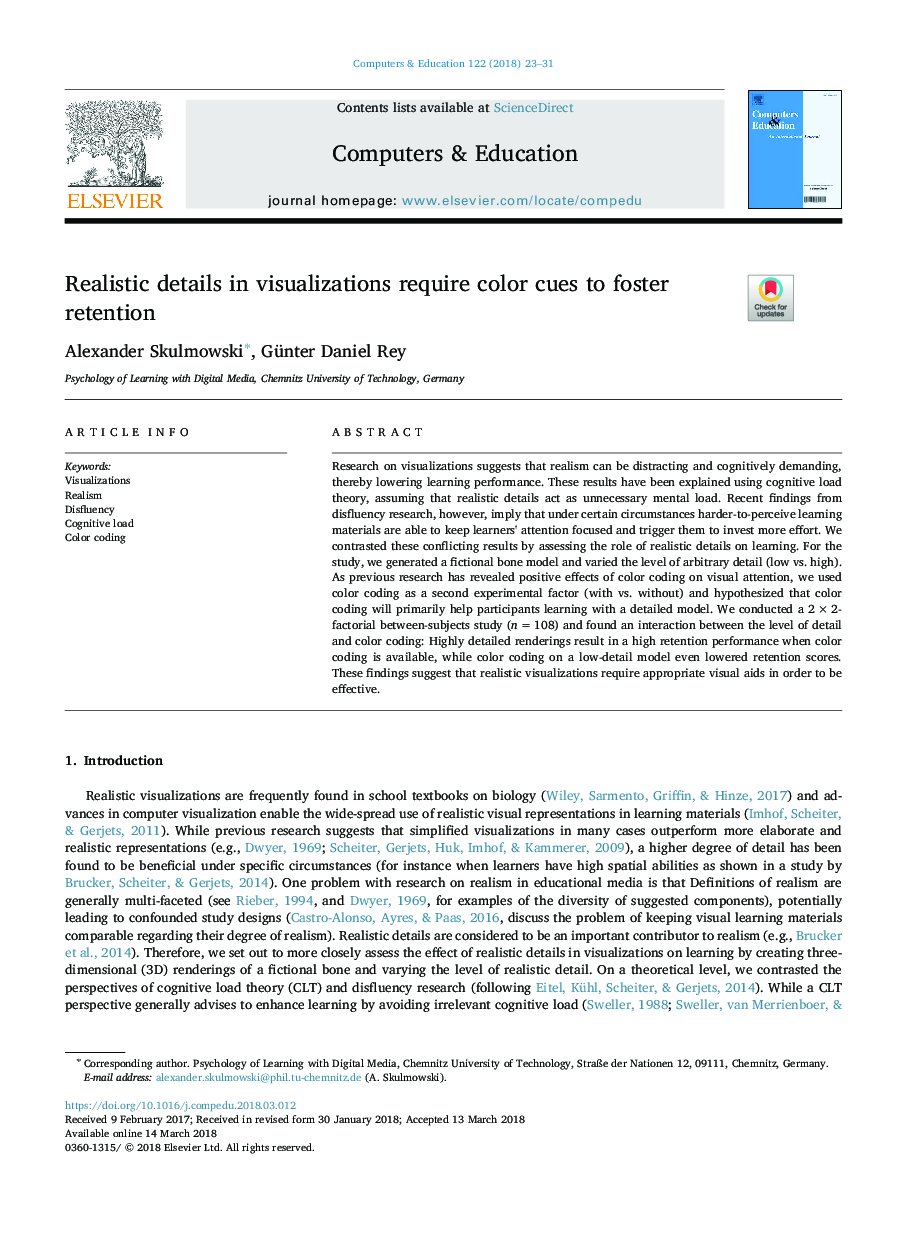| Article ID | Journal | Published Year | Pages | File Type |
|---|---|---|---|---|
| 6834684 | Computers & Education | 2018 | 9 Pages |
Abstract
Research on visualizations suggests that realism can be distracting and cognitively demanding, thereby lowering learning performance. These results have been explained using cognitive load theory, assuming that realistic details act as unnecessary mental load. Recent findings from disfluency research, however, imply that under certain circumstances harder-to-perceive learning materials are able to keep learners' attention focused and trigger them to invest more effort. We contrasted these conflicting results by assessing the role of realistic details on learning. For the study, we generated a fictional bone model and varied the level of arbitrary detail (low vs. high). As previous research has revealed positive effects of color coding on visual attention, we used color coding as a second experimental factor (with vs. without) and hypothesized that color coding will primarily help participants learning with a detailed model. We conducted a 2â¯Ãâ¯2-factorial between-subjects study (nâ¯=â¯108) and found an interaction between the level of detail and color coding: Highly detailed renderings result in a high retention performance when color coding is available, while color coding on a low-detail model even lowered retention scores. These findings suggest that realistic visualizations require appropriate visual aids in order to be effective.
Related Topics
Social Sciences and Humanities
Social Sciences
Education
Authors
Alexander Skulmowski, Günter Daniel Rey,
